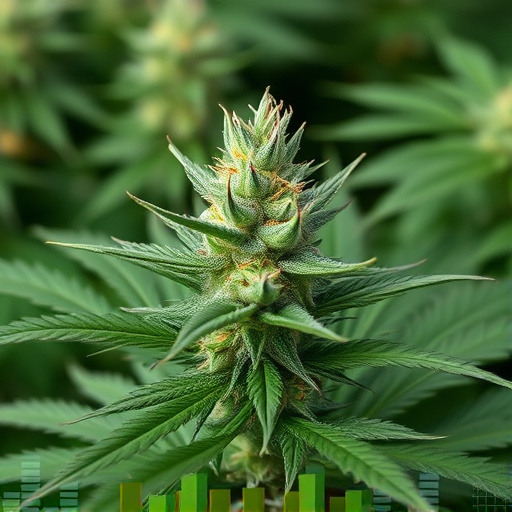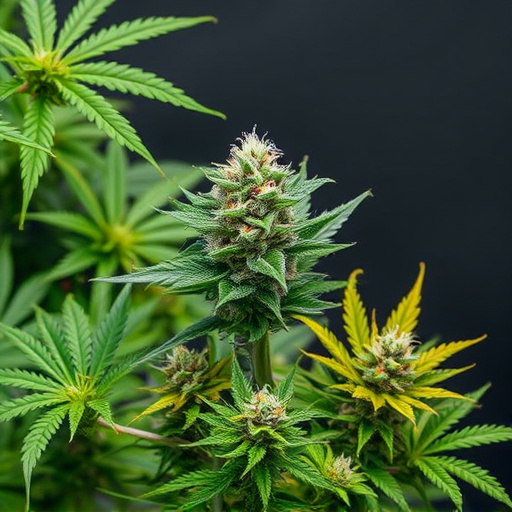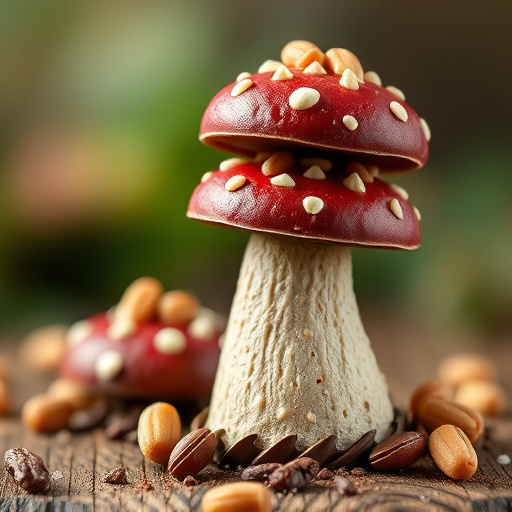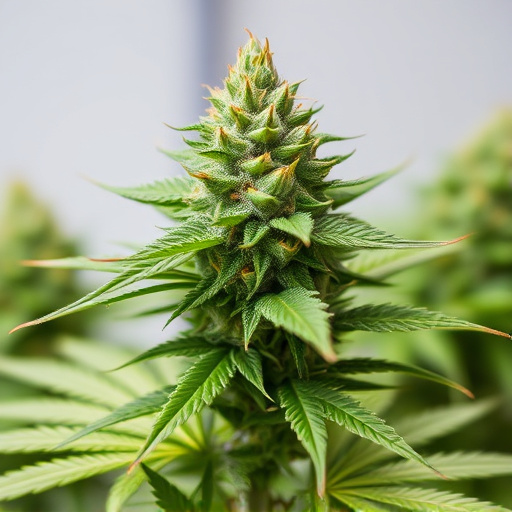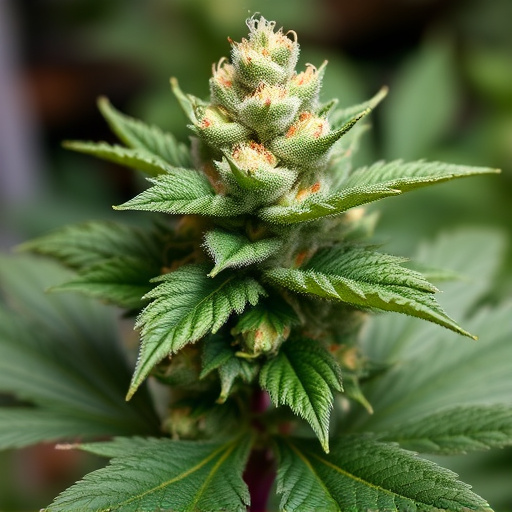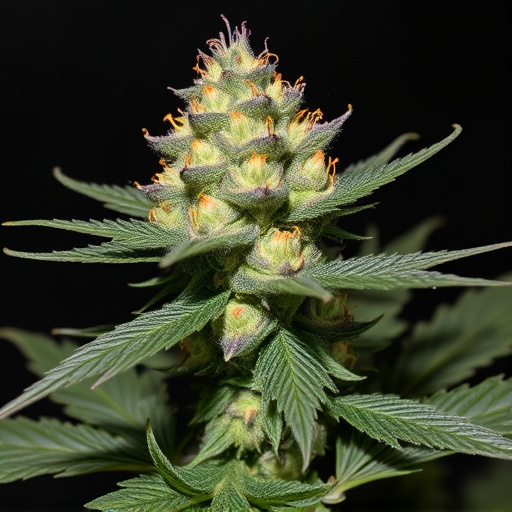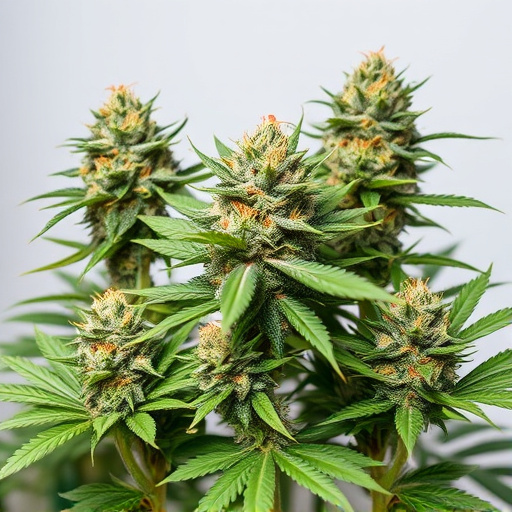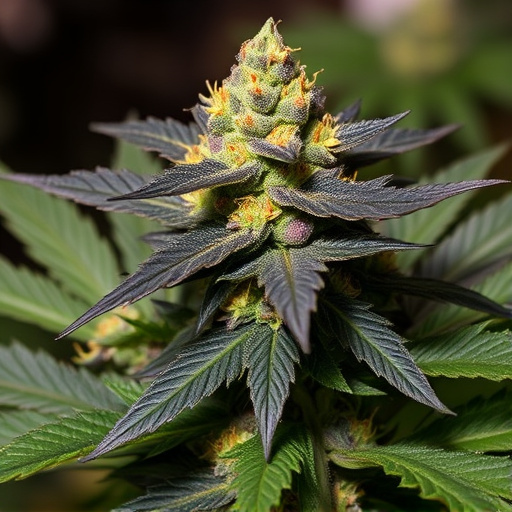Cannabis flower's appetite-stimulating properties are attributed to its cannabinoids, notably THC and CBD, which interact with the human endocannabinoid system. Indica dominant hybrid strains, rich in THC, are known for their calming effects and increased hunger by binding to CB1 receptors in areas controlling eating behaviors. CBD may modulate THC activity, enhancing appetite stimulation. Research shows that cannabis consumption, especially through indica dominant hybrids, leads to significant increases in hunger and food intake, with potential therapeutic benefits for specific eating disorders.
Cannabis has long been known for its ability to stimulate appetite, a phenomenon often attributed to its active compounds, particularly tetrahydrocannabinol (THC). This interaction with our endocannabinoid system plays a crucial role in enhancing hunger. Research indicates that THC binds to receptors in the brain, triggering a cascade of events leading to increased appetite. Indica dominant hybrid strains, with their unique cannabinoid and terpene profiles, are particularly renowned for this effect. These strains offer more than just a relaxing experience; they can prompt users to seek nourishment, making them popular choices for those looking to increase their appetite, especially during medical conditions where eating becomes challenging.
- The Role of Cannabinoids in Appetite Stimulation
- – Explain how cannabinoids like THC interact with the endocannabinoid system to stimulate hunger.
- – Mention specific studies or research findings that support this connection.
The Role of Cannabinoids in Appetite Stimulation
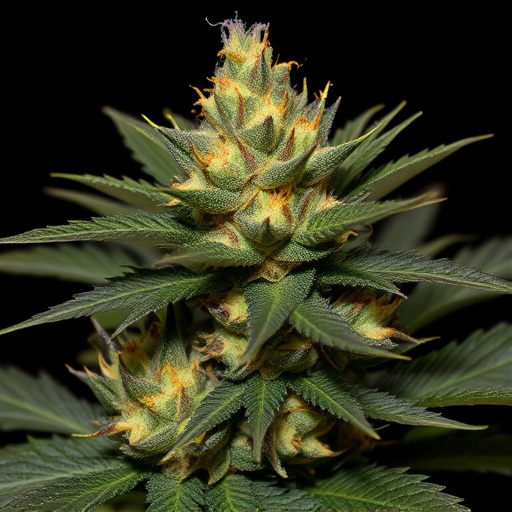
Cannabis flower’s ability to stimulate appetite is closely tied to its unique blend of cannabinoids, most notably tetrahydrocannabinol (THC) and cannabidiol (CBD). These compounds interact with our endocannabinoid system, a complex network of receptors found throughout the brain and body. When activated by cannabinoids, this system plays a crucial role in regulating various physiological processes, including appetite and hunger cues.
Indica dominant hybrid strains, known for their calming and relaxing effects, often have higher levels of THC, which is believed to be a primary driver behind the increased hunger sensation. THC binds to CB1 receptors in the brain, specifically within areas that control eating behaviors and reward systems. This activation can lead to a heightened sense of hunger, prompting users to seek out food more frequently. Additionally, CBD, present in many cannabis strains, may also contribute to this effect by modulating THC’s activity and influencing other non-cannabinoid compounds involved in appetite regulation.
– Explain how cannabinoids like THC interact with the endocannabinoid system to stimulate hunger.
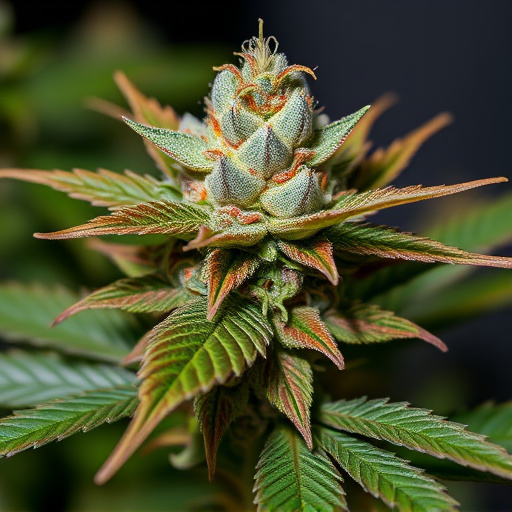
The interaction between cannabinoids like THC (tetrahydrocannabinol) and the human endocannabinoid system is key to understanding why cannabis flower can stimulate hunger. The endocannabinoid system, a complex network of receptors found throughout the brain and body, plays a crucial role in regulating various physiological processes, including appetite. When THC binds to these receptors, it triggers a cascade of events that enhance food intake. This effect is often noticed by users who consume indica dominant hybrid strains, known for their higher THC content and potential to induce a calming, sedative feeling, along with increased hunger.
THC’s ability to interact with the endocannabinoid system isn’t limited to appetite stimulation; it also affects mood, memory, and perception of pain. In the context of cannabis consumption, the combination of these effects can lead to what many describe as a “munchies” experience, where individuals feel an intense craving for food. This is particularly noticeable after consuming potent strains, which can trigger a strong response from the endocannabinoid system, potentially contributing to overeating or snacking behaviors.
– Mention specific studies or research findings that support this connection.
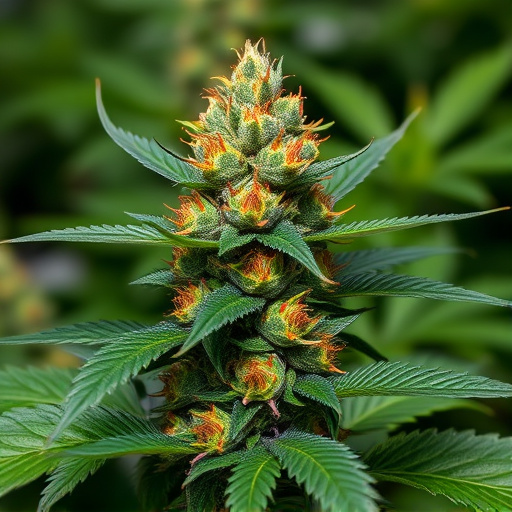
Several studies have explored the link between cannabis consumption, particularly through indica dominant hybrid strains, and increased appetite. Research published in the Journal of Psychopharmacology found that cannabis users reported significant increases in hunger and food intake after ingestion. The study suggested that cannabinoids, notably tetrahydrocannabinol (THC), interact with brain regions involved in regulating eating behaviors, leading to enhanced appetites.
Another investigation, this time in the American Journal of Eating Disorders, examined the effects of cannabis on individuals with anorexia nervosa and found that patients reported improved food intake and reduced anxiety around mealtimes after using cannabis, particularly low-THC strains. These findings highlight the potential therapeutic benefits of cannabis for certain eating disorders while also emphasizing the connection between specific cannabis chemistries and changes in hunger levels.
Cannabis’ ability to stimulate appetite is well-documented, particularly through its interaction with the endocannabinoid system. Compounds like THC play a pivotal role in this process, binding to receptors that regulate hunger and reward. Studies have shown that both animal models and human trials indicate a significant correlation between cannabis consumption, especially from indica dominant hybrid strains, and increased appetite. Understanding this effect can help users make informed choices, especially those who use cannabis for medical purposes, ensuring a more enjoyable and effective experience.
